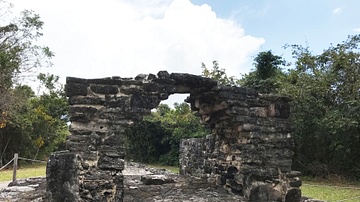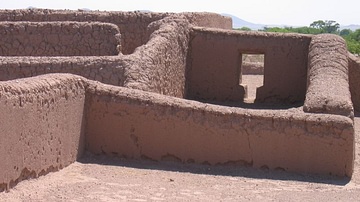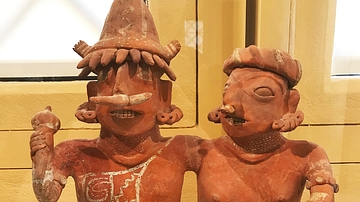Search
Did you mean: Texcoco?
Remove Ads
Advertisement
Summary 
Loading AI-generated summary based on World History Encyclopedia articles ...
Search Results

Interview
Interview: Living in Silverado: Secret Jews in the Silver Mining Towns of Colonial Mexico
Professor Emeritus David Gitlitz is one of the world’s leading experts on Jewish-Catholic interactions in Iberia and the Americas. While initially drawn to the literature of the Spanish Golden Age as a student at Oberlin and Harvard, the...

Video
Mexico Yucatán Yukatan UXMAL Mayan Pyramid Ruins Merida Óoxmáal
Uxmal bezeichnet die Ruinen einer ehemals großen und kulturell bedeutenden Stadt der Maya in Mexiko. Uxmal is an ancient Maya city of the classical period in present-day Mexico. Uxmal es una antigua ciudad maya del periodo clásico...

Image
The Maya Arch at San Gervasio, Mexico
In Pre-Columbian days, this construction was the entrance or exit to the central part of San Gervasio, leading to the Caribbean coast. Pilgrims and traders would reach the famous sanctuary of the goddess Ix Chel and deposit an offering at...

Image
Remnants of Maya Ruins at San Gervasio, Mexico
The ruins of San Gervasio — located on the island of Cozumel in Mexico — were once an important site of pilgrimage to Maya people who lived from c. 1000-1650 CE. A sanctuary of the Maya goddess Ix Chel used to be located at this location...

Image
Pottery Bowl from Casas Grandes (Paquimé), Mexico
This pottery bowl comes from Casas Grandes (also known as "Paquimé"), which is located in what's present-day Chihuahua, Mexico. It is made from clay and dates to c. 1250-1400 CE. Casas Grandes was one of the largest and most complex culture...

Image
Casas Grandes, Mexico
Ruined house, Casas Grandes or Paquimé, a major pre-Columbian city that flourished due to its extensive trading networks between c. 1150/1200-1450 CE in the northwest of present-day Chihuahua, Mexico.

Image
Maya Ruins of San Gervasio on Cozumel, Mexico
The ruins of San Gervasio — located on the island of Cozumel in Mexico — were once an important site of pilgrimage to Maya people who lived from c. 1000-1650 CE. A sanctuary of the Maya goddess Ix Chel used to be located at this location...

Image
Maya Stele in Grand Plaza Chacchoben, Mexico
Weathered and broken stele in the Grand Plaza of the Maya city of Chacchoben, Mexico, c. 700 CE. It rests at the foot of the stairs leading up to the Gran Basamento plateau where religious rituals were held.

Image
Male Figure from Nayarit, Mexico
This sculpture of a male figure dates from 200 BCE-500 CE. It is a polychrome ceramic. It comes from what's presently Nayarit, Mexico. (Iris & B. Gerald Cantor Center for Visual Arts at Stanford University, Stanford, California)

Image
Joined Couple from Nayarit, Mexico
This sculpture of a joined male and female couple dates from 100 BCE-250 CE. It is a polychrome ceramic and comes from Nayarit, Mexico. (Iris & B. Gerald Cantor Center for Visual Arts at Stanford University, Stanford, California)